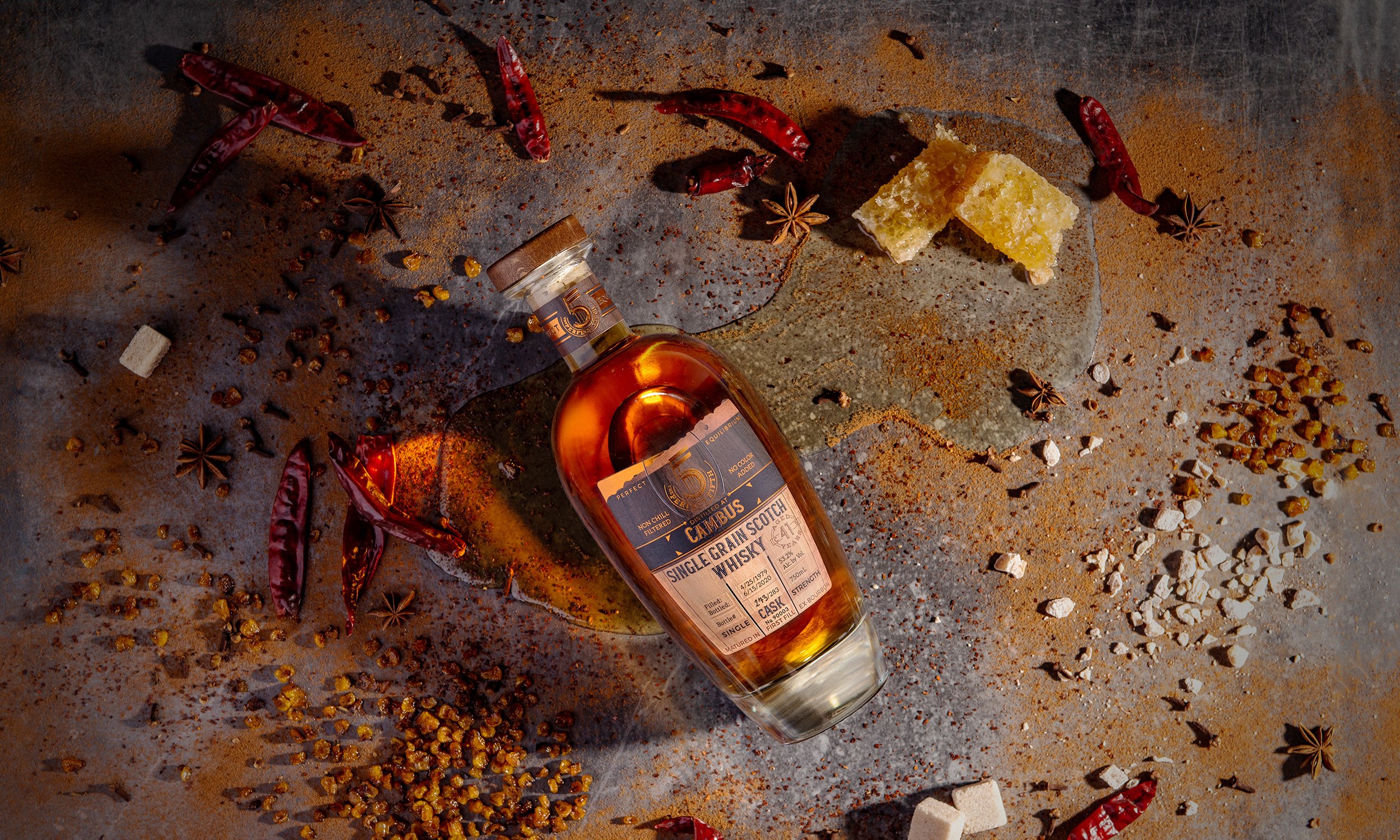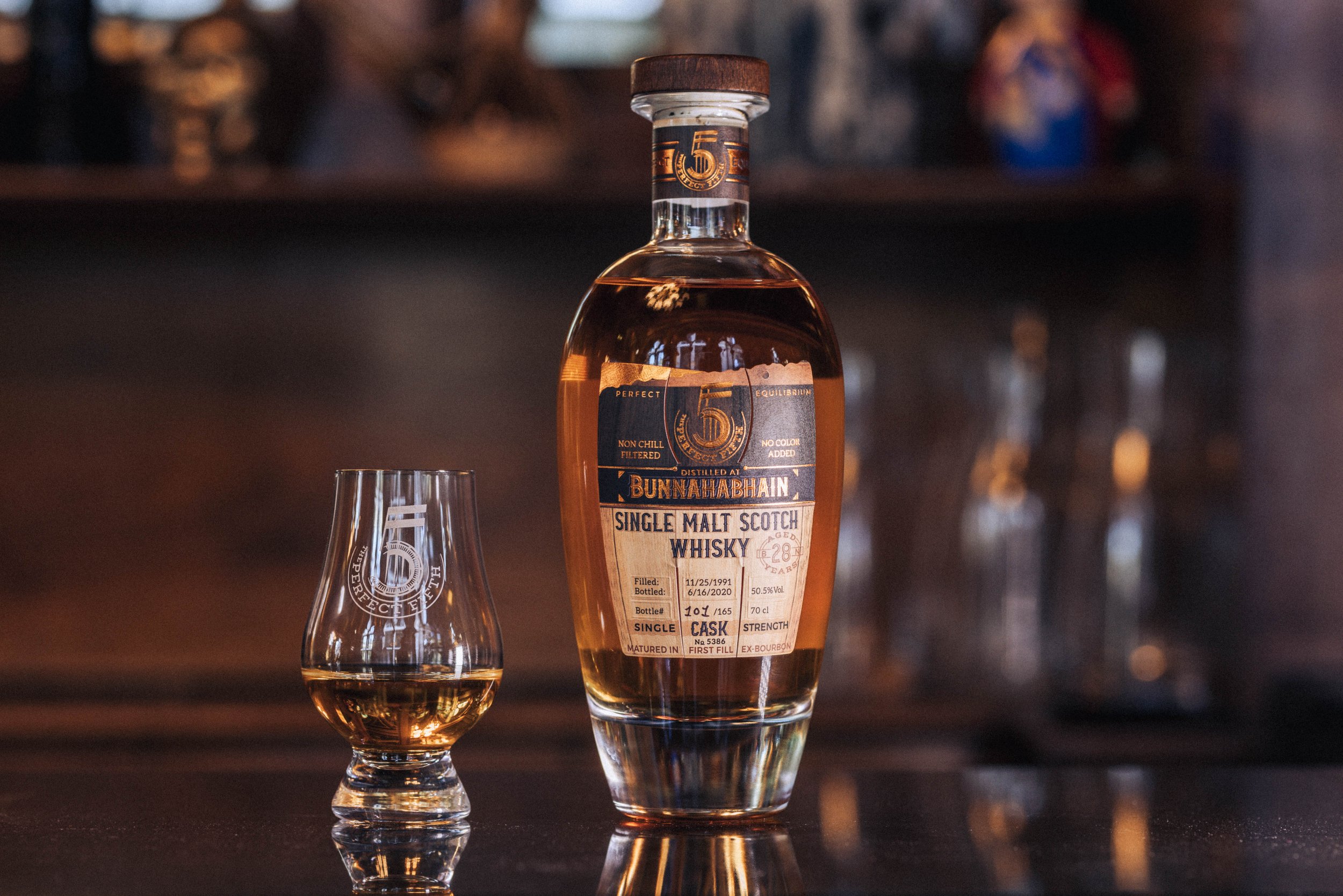

Cambus
41 Year old single grain
A rare find from an esteemed grain distillery. Four decades of maturation have afforded this superb distillate time to develop into something truly special. With honeyed sweetness and pudding flavours abundant through the nose and palate – complemented with orange, nougat and touches of aromatic spice - even those with the most ardent sweet-tooth will find this a fine substitute for dessert.
Cask Number: 90003
Vintage: 1979
Strength: 53.2%
Region: Lowlands
Bottled Year: 2020
Bottles: 283
96.5 Rating

-
Just classic. The corn oils and Ulmo honey are in a love clinch….;
-
Now I’m in one…with the glass…! The Ulmo honey spreads around your palate like your lover on a rug before a log fire… And now the oak is gorgeously embedded into the corn. So the mouthfeel plays an equal role to the flavours… and they are luxurious and delicate in the extreme. A fragile blend of acacia and heather honey on one higher pitch, Ulmo honey on a deeper, and here even with a light coconut touch…;
-
No bitter notes, which so often happens at this age and after so much honey on display. Just a slow sunset of corn oils, still the Ulmo honey and now a wonderful but measured degree of pattering spice…;
-
Given the right cask and the right time, Cambus is as good as anything distilled in Scotland. Here we see it in sublime form: no major faults from the cask… and certainly not the distillate. How many varying forms and densities of sweetness can you find on one whisky? Well, here’s your chance to find out… get counting…!
Reviews
“Colour: gold. Nose: rather wonderful, some kind of Hedonism at the power of two. Make that three. Many white and yellow flowers, some nougat and popcorn, certainly touches of fresh American oak, then macaroons and meringues, those croissants, and just anything in a good pastry shop around 7a.m. With water: goes even more towards nougat, halva, turon, pistachios, peanut butter… Mouth (neat): liquid orange cake, sponge cake, loads of nougats, a rather tense citrusy side, and no 'ethanol'. English breakfast tea – with a dash of milk. I know… With water: it takes water extremely well, does not sink, does not become cardboardy, neither does it get flattish… In fact it does not change much. Orange-flavoured nougat, tea... Finish: medium, rather fresh. Notes of orgeat syrup, touches of aniseed. What we call a 'mauresque' over here, that's pastis with a little orgeat. Comments: very slow-matured high-echelon grain whisky, as expected.”
Serge Valentin, WhiskyFun (88 points)

Region: Lowlands
This whisky distilling region encompasses the rolling hills and fertile farmlands of southern Scotland, with a northernmost boundary line that lies roughly along the site on which Roman Emperor Hadrian chose to build his wall in AD 122. The malts that are produced in the distilleries south of this line tend towards being light in colour, with mellow fruitiness, and a dry finish as a result of the predominant use of unpeated malt. The region is also home to some closed distilleries, such as Rosebank, whose spirit is now highly prized, as supplies dwindle. The produce of this region is mainly destined for blends, with five out of seven operating grain distilleries found in this region.
_______

Distillery: CAMBUS
It is a little-known fact that Cambus distillery began its life distilling malt whisky – in a disused mill on the banks of the Deveron in Alloa, before the Moubray family had the foresight in 1836 to install two Stein patent stills. The switch to grain whisky was the prelude to a century as one of the largest and most esteemed grain whisky distillers in Scotland. Highly regarded by blenders, the spirit of Cambus also emerged into the spotlight as a single grain product, and ‘Cambus Pure Grain Whisky’, aged for seven years, played a starring role in DCL’s campaign to sway public opinion in favour of allowing grain spirit to use the name ‘whisky’. Grain whisky won the fight, and the produce of Cambus remains a firm favourite among independent bottlers. However, supplies are dwindling – the distillery closed its doors in 1993, and only a handful of casks remain.
YOU MAY ALSO LIKE…
GLEN SCOTIA
Chocolate and peat are vibrant in this delightful malt from one of the three remaining distilleries operating in Campbeltown.
BUNnAHABHAIN
A bright and herbal Bunnahabhain from the 1990s, which ticked all the boxes for character traits we love from this era.
ABErLOUR
A truly Speyside whisky, this release embodies all of the luxurious, sweet rich fruitiness which has made it the number one whisky in France.







